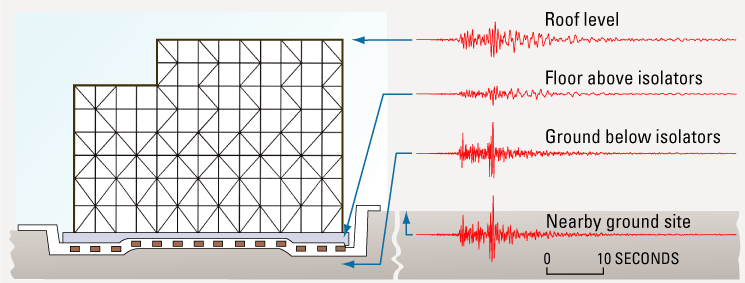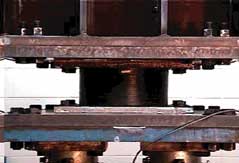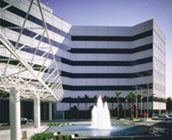One
engineering strategy for reducing earthquake damage is to partially decouple,
or isolate, a building from ground shaking in an earthquake. This strategy,
called base isolation, is increasingly used to safeguard important structures.
Building response recorded by the California Geological Survey in the 1994
Northridge earthquake (magnitude 6.7) confirmed the promise of the base-isolation
strategy.
The 8-story steel superstructure of the University of Southern California
(USC) University Hospital in Los Angeles is supported by 149 isolators (see
photos above) sitting on continuous concrete footings. During the Northridge
earthquake, motions recorded at the top of the isolators and at the roof
were less than those recorded in the ground below the isolators and at a
nearby site removed from the building. The isolators reduced the level of
motion fed into the base of the building by about two-thirds. The peak shaking
at roof level was only about 40% of that recorded on the ground about 200
feet from the building, whereas with a conventional foundation the roof-level
shaking would have exceeded that measured on the ground. |




